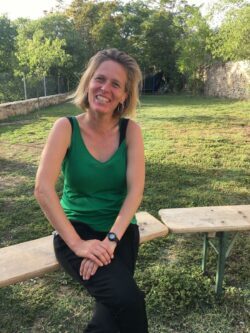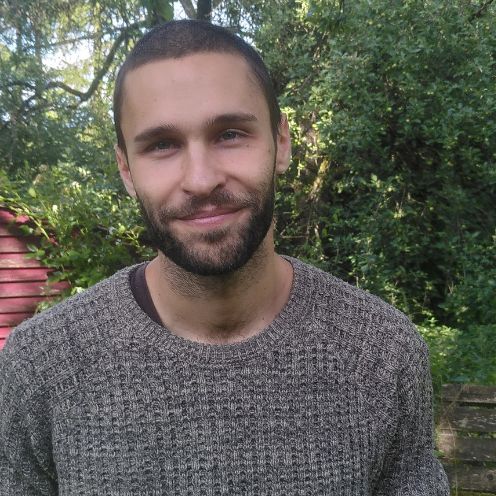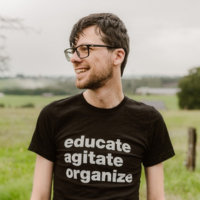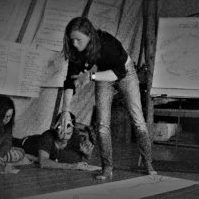new stories: different worlds
“It is easy to forget how mysterious and mighty stories are. They do their work in silence, invisibly. They work with all the internal materials of the mind and self. They become part of you while changing you. Beware the stories you read or tell; subtly, at night, beneath the waters of consciousness, they are altering your world.”
—Ben Okri, Author
Effective strategies for social transformation involve the contest for how we think, how we see, and the stories we tell about our world. New stories, new thinking, help new worlds come into being. This training aims to help our movements to tell better stories for a different world.
We witness the power of narrative and story on a daily basis. Division and hatred are spread by the rightwing press and politicians. The issues of the day are quickly framed on social media. Historical stories provide deep undercurrents of understanding of our national and global psyches. And, within this ecosystem, our movements are also telling stories of need and despair, hope and change: think Greta and the school strikers, Strajk Kobiet, or the Movement for Black Lives.
But how can we be sure that the stories we are telling—the way we are communicating the issues we care about—are effective? How do we know that they are catching people’s attention, engaging, motivating, building our movements, and ultimately bringing about change?
This training will focus on the role of framing in our work on social and environmental justice.
This training is part of the Ulex Central and Eastern Europe Programme. It is designed and delivered by a training team embedded in CEE social movements.
In this training we’ll explore the process for developing effective narratives. We’ll demystify the terms around story, framing and narrative and take a whistle-stop tour through the theory behind the framework. And we’ll move through the process of developing a vision, understanding the narrative landscape, and creating and testing new routes through this landscape.
In detail, the training will cover:
Developing vision
Understanding the narrative landscape
Developing new frames
Testing frames
The training will be participatory and practical throughout.
Participants can expect to gain:
Who is it aimed at?
This course is aimed at anyone involved in engaged action on environmental, political and social justice issues coming from Central-Eastern Europe. We embrace a broad definition of activism, including: Resistance – action preventing further damage to ecosystems and social justice; Renewal – action focused on developing and creating alternatives for healthier societies and communities; and Building Resilience – action supporting increased resilience in communities to weather the uncertain times ahead.
The main spoken language on the course will be English.
This training will take place in Kunbábony, Hungary
This venue is accessible for people with limited mobility.
This training is offered in the solidarity economy. You do not need to contribute financially to attend. Contact us if you need a travel bursary – we might be able to offer it.
In the solidarity economy:
(See details of our approach to radical economics here)
Contact us
to apply

Location:
An Maeyens (she/her) is a facilitator and trainer with over two decades of experience in grassroots movements. She specialises in creative, inclusive agenda design and brings deep expertise on group culture, power dynamics, and transformative learning. Starting of in the anti-globalisation movement she has trained thousands in civil disobedience, supported international coalitions, and developed multilingual training programmes and toolkits. Her work spans movements, cultures, and countries, guided by a commitment to care, accessibility, and leaderful organising.

Location:
Ari’s activism began in 2002, at age 16, as a Bosnian refugee in Canada, where they founded and coordinated a group for LGBTIQ high school students and allies. They were a co-founder and leader at kolekTIRV in Croatia and Trans Network Balkan, involved in community organizing, advocacy, program management, team coordination, capacity building, education, media work, campaigns, events, fundraising, etc. In 2024, they joined the Supervisory Board of the Croatian Trade Union Collective of United Precarious Workers and Activists (SKUPA).
Beyond the Balkan region, Ari served as a Board member at Transgender Europe (TGEU), where they held roles as Secretary, Treasurer, and later Co-chair. They have also been a trainer with the Center for Artistic Activism and served on the Advisory Committee and since 2022 as a Community Care Facilitator at FRIDA — The Young Feminist Fund. Since 2024 they are the Operations Manager at Global Philanthropy Project.

Location:
Sergio (all pronouns) was born in Romania and migrated to Germany in the early 2010s. In the past, he was a social worker with homeless people and a social consultant for Eastern European migrants for various organisations. Trained as a filmmaker, he spent two years making a documentary about the ‘civic reawakening’ in Romania and the waves of protest it brought with it. In connection to this, Sergio is currently co-steering the development of an online open-source participative knowledge production platform on activism in Romania. Over the past nine years, Sergiu has offered his skills to various journalists, grassroots collectives and campaigns, mostly working within the labour rights, climate justice, international solidarity and anti-authoritarian movements in Germany and Romania. Nonetheless, his biggest focus since 2020 has been his work as an organiser with the anarcho-syndicalist Free Workers Union, where he focuses mostly on organising Romanian migrant workers on construction sites, in factories and in the agricultural field.



Ulex: del Llatí, (argelaga en català) nom:
1. Arbust espinós de fulla perenne i floració, amb gran capacitat de regeneració i resistència. Les seves pues s’obren en entrar en contacte amb el foc i torna a brollar dels tocones carbonitzats. Planta successional que creix bé en condicions difícils. Millora la fertilitat del sòl mitjançant la fixació de nitrogen, preparant el terreny per a una renovada biodiversitat.
2. Una opció tradicional per a encendre focs. Crema amb intensitat i lluentor.
3. Un projecte en xarxa que aporta nutrició i fertilitat als moviments socials europeus a través de la formació